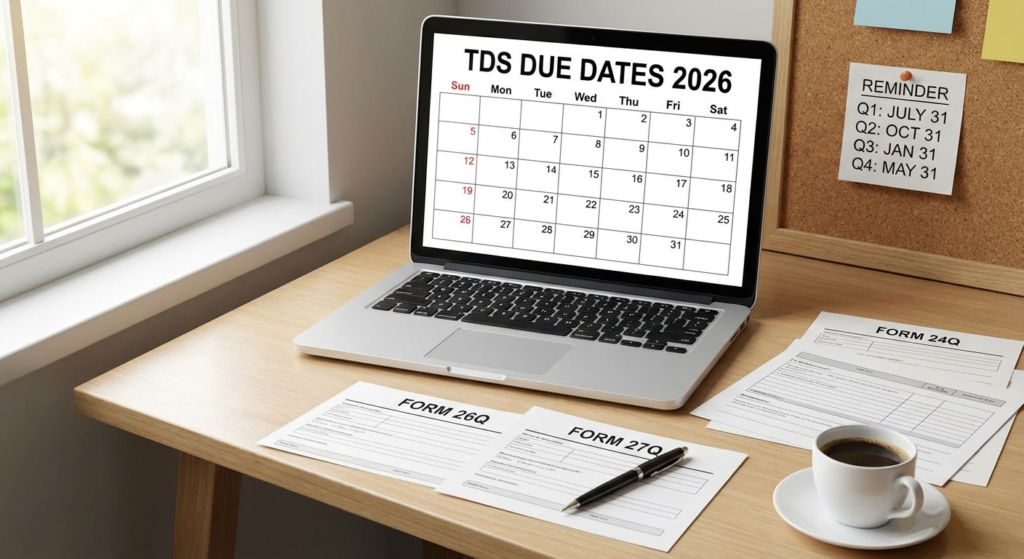Are you feeling lost with so many mutual funds out there? With nearly 7,285 mutual funds to pick from as of September 2024, finding the right one can seem hard. But don’t worry, we’re here to help! In this guide, we’ll show you how to choose the best mutual fund for your goals. We’ll also help you find top performing funds that match your financial dreams.
Mutual funds let you join with others to invest in a big mix of stocks and bonds. Each share in the fund means you own a part of what it holds. This way, you can explore many investment options without handling each one yourself.
But remember, not all mutual funds are the same. A fund’s success depends on its assets and the skill of its manager. To pick wisely, think about your goals, how much risk you can take, and how long you can wait for your money to grow. It’s also important to know about the different types of funds, their fees, and how they’ve done in the past.
Key Takeaways
- Mutual funds offer a wide range of investment choices, with nearly 7,285 funds available as of September 2024.
- Choosing the best mutual fund involves considering your investment goals, risk tolerance, and time horizon.
- Expense ratios, which represent the annual fee paid to the fund house, can significantly impact your returns. Actively managed equity funds had an average expense ratio of 0.66% in 2022, while passively managed index funds had an average of 0.05%.
- Evaluating a fund’s past performance, fund manager’s expertise, and comparing it with benchmarks and peer groups are crucial points to remember while choosing a mutual fund.
- Diversification and asset allocation are key strategies to minimize risk and optimize returns in your mutual fund portfolio.
Understanding Mutual Funds
Mutual funds combine money from many investors to buy a variety of securities. This can include stocks, bonds, or both. By investing in mutual funds, you get professional management and the chance to earn returns based on the securities’ performance.
When picking the best mutual fund, it’s key to know how they make money. Mutual funds earn in two main ways: income and appreciation. Income comes from bond interest or stock dividends. This income goes to you as an investor.
Appreciation happens when the securities’ value goes up. This increase is shown in the fund’s net asset value (NAV) per share. The manager might share these gains with investors, minus any losses.
The earning potential in mutual funds varies depending on the type of fund and its underlying investments.
Different mutual funds meet different investment goals and risk levels:
- Equity funds mainly invest in stocks and are best for long-term goals over five years. They offer high returns but also come with higher risks.
- Debt funds focus on fixed-income securities like bonds and are good for shorter terms from one day to five years. They offer lower risk and more stable returns than equity funds.
- Hybrid funds mix stocks and bonds, aiming for a balance between growth and stability. They suit investment periods of three to five years.
| Fund Type | Investment Horizon | Risk Level |
|---|---|---|
| Equity Funds | More than 5 years | High |
| Debt Funds | 1 day to 5 years | Low to Moderate |
| Hybrid Funds | 3 to 5 years | Moderate |
When looking at mutual fund earnings, consider the fund’s past performance, the manager’s skills, and the expense ratio. A mutual fund returns calculator can estimate your potential returns based on your investment and time frame.
Identifying Your Investment Goals and Risk Tolerance
Before you start with mutual fund investments, knowing your goals and risk level is key. These factors help pick the right mutual fund strategy for you. It’s all about matching your financial situation and dreams.
Determining Your Investment Time Horizon
Your investment time frame is how long you plan to keep your money in mutual funds. It depends on your financial goals, like saving for retirement or college. Here are some tips for setting your time horizon:
- Long-term goals (5+ years): Equity Mutual Funds are good for long-term goals. They aim for growth over time.
- Short-term goals (1-3 years): Debt Mutual Funds are better for short-term goals. They focus on keeping your money safe.
- Medium-term goals (3-5 years): Hybrid Mutual Funds offer a mix of growth and safety. They balance equity and debt.
Assessing Your Risk Tolerance
Risk tolerance is how well you can handle market ups and downs. It’s important to match your risk level with your investment strategy. This helps avoid stress and makes investing easier.
- Age: Younger people can usually take more risk. They have more time to recover from market drops.
- Financial stability: Your current financial state affects your risk tolerance. A solid financial base lets you take more risks.
- Investment knowledge: Knowing about finance helps you make better choices. It makes dealing with market changes easier.
| Risk Tolerance | Suitable Mutual Fund Category |
|---|---|
| Low | Debt Funds, Liquid Funds, Money Market Funds |
| Moderate | Hybrid Funds, Large-cap Equity Funds, Index Funds |
| High | Mid-cap and Small-cap Equity Funds, Sector Funds |
Think about your time horizon and risk tolerance when choosing mutual funds. This helps you pick funds that fit your financial goals. Remember, investing in mutual funds comes with market risks. It’s important to check and adjust your portfolio as your needs change.
Types of Mutual Funds
There are many mutual funds to choose from, each for different goals and risk levels. Knowing about these funds helps you build a strong investment portfolio. Let’s look at some common types of mutual funds.
Equity Funds
Equity funds invest in company stocks for long-term growth. They offer high returns, making them good for long-term investors. Equity funds are divided by company size, like large-cap, mid-cap, and small-cap.
By investing in equity funds, you can grow your wealth over time.
Debt Funds
Debt funds invest in bonds and bills for stable returns. They are less risky than equity funds and aim for steady income. Debt funds are great for those who want to keep their money safe.
They come in types like liquid funds and long-term bond funds. Adding debt funds to your mutual fund portfolio can balance your risk.
Hybrid Funds
Hybrid funds mix equity and debt for balance. They aim to grow your money while keeping it stable. The mix of equity and debt depends on the fund’s goals and risk level.
Hybrid funds are good for those wanting a mix of growth and income with moderate risk.
Sector Funds
Sector funds focus on specific industries like tech or healthcare. They let you invest in a sector’s growth while diversifying within it. But, they are riskier than diversified funds.
They are best for those who understand the sector and are willing to take more risk.
Index Funds
Index funds track a market index like the S&P BSE Sensex. They invest in the same stocks as the index, mirroring its returns. Index funds are low-cost and offer a passive way to invest.
They are great for those believing in the market’s long-term growth and wanting a simple investment option.
| Fund Type | Investment Objective | Risk Level | Suitable for |
|---|---|---|---|
| Equity Funds | Capital appreciation | High | Long-term investors |
| Debt Funds | Stable returns and income | Low to Moderate | Short to medium-term investors |
| Hybrid Funds | Balance of growth and stability | Moderate | Investors seeking diversification |
| Sector Funds | Growth in specific sectors | High | Investors with sector knowledge |
| Index Funds | Market index returns | Varies based on index | Passive investors |
Choosing a mutual fund depends on your goals, risk tolerance, and time frame. Diversifying your portfolio across different funds can reduce risk and increase returns. Always research the fund’s past performance, fees, and the manager’s track record before investing.
If you want to get help in choosing the best mutual fund, you can take help of My Digital Filing. Here you can get free expert consultancy for selecting the best mutual funds.
Factors to Consider When Choosing a Mutual Fund
When picking a mutual fund, look at several key factors. These include the fund’s past performance, the experience of the fund manager, and the fees involved. Also, consider the fund’s size and the assets it manages.
Fund Performance and Track Record
A mutual fund’s past results can show its future potential. While past success doesn’t guarantee future gains, it’s important to check the fund’s performance over time. Look at its performance over 6 months, 1 year, 3 years, 5 years, and since it started.
Compare the fund’s returns to its benchmark and category averages. A fund that consistently beats these can be a good sign of a skilled manager.
Fund Manager’s Experience and Expertise
The fund manager’s experience and reputation are crucial. A manager with a strong track record can give investors confidence. Look into the manager’s qualifications, how long they’ve been managing funds, and their past performance.
A good manager can make smart investment choices and adjust to market changes.
Expense Ratio and Fees
Mutual funds charge fees that can affect your returns. The expense ratio is the annual cost of running the fund. It includes management fees, administrative costs, and distribution fees. A lower expense ratio means more of your investment goes towards returns.
Compare the expense ratios of different funds in the same category to find the most cost-effective ones.
| Mutual Fund Category | Typical Expense Ratio Range |
|---|---|
| Equity Funds | 1.5% – 2.5% |
| Debt Funds | 0.5% – 1.5% |
| Hybrid Funds | 1.0% – 2.0% |
| Index Funds | 0.1% – 0.5% |
Also, watch out for other fees like entry and exit loads. These can reduce your returns. Look for funds with lower or no loads.
Fund Size and Assets Under Management (AUM)
The size of a mutual fund affects its costs and flexibility. Larger funds often have lower costs due to scale. But, a big AUM in equity funds might make it hard for the manager to buy or sell stocks without affecting prices.
On the other hand, a small AUM might limit the fund’s investment options. Consider the fund’s AUM and its investment strategy. A fund with a suitable AUM can be more agile in its investment approach.
How to select best mutual fund?
Choosing the right mutual fund can be tough, especially for new investors. With so many options, it’s key to know your goals, how much risk you can take, and when you plan to cash out. Here are some important things to think about when picking a mutual fund:
- Investment Objective: Make sure the fund’s goals match yours. For example, if you’re saving for the long term, consider equity funds.
- Fund Performance: Check how the fund has done over time, like 3 months to 3 years. Look for steady growth and compare it to others.
- Fund Manager’s Expertise: Learn about the fund manager’s skills and experience. A good manager can handle market ups and downs well.
- Expense Ratio: The expense ratio is the yearly fee for managing your money. A lower fee means more of your money works for you.
- Risk-Return Profile: Think about how much risk you’re okay with. Equity funds are riskier but can offer bigger rewards. Debt funds are safer but might not grow as much.
To make choosing easier, use tools like the HDFC Bank SmartWealth App. It has features like:
- Investment Profile: Find out your risk level and goals.
- Fund Screener: Narrow down funds based on what you want.
- Fund Report Card: Get all the details and analysis on each fund.
- Research Team Recommendations: Get advice from experts.
- Portfolio Analyser: Check your current portfolio and see how to improve it.
“Investing in 2-3 top-performing mutual fund schemes from different fund houses is a good starting point for beginners. This helps avoid overdiversification and allows you to monitor your investments effectively.”
| Mutual Fund Selection Criteria | Importance |
|---|---|
| Investment Objective Alignment | 75% of funds should match your asset allocation needs |
| Past Performance Consistency | Look for a high ratio of past to future performance |
| Top Performing Funds | Identify top funds across different time horizons |
| Expense Ratio | 62% of investors consider fund costs crucial in scheme selection |
| Diversification | 78% of investors seek advice on diversifying their mutual fund investments |
By looking at these factors and using the right tools, you can choose the best mutual fund for your goals. Always check your investments and adjust them as needed to keep them in line with your changing needs and the market.
Evaluating Mutual Fund Performance
Investing in mutual funds requires careful evaluation of their performance. You want to make sure your money is in funds that meet your financial goals and risk level. We’ll explore how to assess mutual fund performance, including NAV and returns, and comparing them to benchmarks and peers.
Understanding NAV and Returns
Net Asset Value (NAV) shows the price of each mutual fund unit. It’s calculated by dividing the fund’s total assets by the number of units. This value helps you see the worth of your investment and its returns over time.
When looking at a fund’s performance, consider both its absolute and risk-adjusted returns. Absolute returns show the fund’s growth over a period. However, they don’t account for the risk taken to achieve those returns. Risk-adjusted returns, on the other hand, consider the fund’s volatility and risk.
Risk-adjusted returns help investors see how well a fund has done compared to its risk. The Sharpe and Treynor ratios are key metrics here. The Sharpe ratio uses standard deviation to measure total risk, while the Treynor ratio uses beta for systematic risk.
Comparing Funds with Benchmarks and Peer Groups
It’s important to compare a mutual fund with benchmarks and peer groups. Benchmarks are market indices that show the performance of a specific market segment. For example, the S&P BSE Sensex is a benchmark for Indian equity funds.
When comparing a fund’s returns to its benchmark, look at its alpha. A positive alpha means the fund has outperformed its benchmark. For instance, an alpha of +4% means the fund has earned 4% more than its benchmark.
Comparing a fund to its peer group is also crucial. Peer groups have similar investment goals and risk profiles. This comparison helps you see how the fund stacks up against similar funds in the market.
| Performance Metric | Description |
|---|---|
| Alpha | Excess returns generated compared to a benchmark |
| Beta | Sensitivity of a fund’s performance relative to a benchmark or the broad market |
| Sharpe Ratio | Risk-adjusted returns considering total risk using standard deviation |
| Treynor Ratio | Risk-adjusted returns focusing on systematic risk using beta |
| Rolling Returns | Evaluation of returns over smaller periods like monthly, quarterly, or yearly |
Remember, past performance is not a guarantee of future results, but it can provide valuable insights into a fund’s historical behavior and the fund manager’s expertise.
When evaluating mutual fund performance, consider several factors. Look at absolute and risk-adjusted returns, benchmark comparisons, and peer group analysis. This approach helps you choose the best mutual funds for your investment goals and risk tolerance.
Diversification and Asset Allocation
Investing in mutual funds means using diversification and asset allocation. These strategies help manage risk and improve your portfolio’s performance. Diversification spreads your investments across different types and places to reduce risk. Asset allocation is about choosing the right mix of investments based on your risk level, goals, and time frame.
Experts say to diversify within each investment type too. For example, in equity funds, mix large-cap, mid-cap, and small-cap funds. Also, include funds from different sectors and places. This way, you can avoid big losses from market ups and downs.
Mutual funds and ETFs offer some diversification by holding many investments. But, make sure your whole portfolio matches your goals and risk level.
As markets change, your portfolio might not stay balanced. Rebalancing is key to keep the right mix of growth and returns. You can rebalance by moving money to underperforming areas, adding new investments, or selling from strong areas.
Asset allocation is a strategy to maintain a risk-reward ratio by diversifying investments in different asset classes based on factors such as risk tolerance, financial goals, and time horizon.
Quantum suggests a 12-20-80 strategy. This means keeping 12 months’ expenses in a liquid fund, 20% in gold, and 80% in diversified equity funds. This mix can balance risk and reward, helping grow your wealth over time.
| Index | Performance (August 2024) |
|---|---|
| BSE Sensex | 1% growth |
| BSE Midcap Index | 1.0% growth |
| BSE Small cap Index | 1.4% growth |
In summary, diversification and asset allocation are key to a good mutual fund strategy. By spreading investments and rebalancing, you can reduce risk, increase returns, and reach your financial goals.
Mutual Fund Taxation
Investing in mutual funds means knowing about taxes. In India, taxes on mutual funds depend on the fund type, how long you hold it, and the type of gain. It’s key to understand these to get the most from your investments.
Short-term and Long-term Capital Gains Tax
Capital gains tax on mutual funds changes based on the holding period and fund type. Here’s a quick guide to the tax rules for different mutual funds:
| Fund Type | Short-term Capital Gains (STCG) | Long-term Capital Gains (LTCG) |
|---|---|---|
| Equity Funds | 15% (before July 23, 2024) 20% (after July 23, 2024) | 10% (before July 23, 2024) 12.5% (after July 23, 2024) |
| Debt Funds | Taxed at individual’s slab rate | 20% with indexation (before July 23, 2024) 12.5% (after July 23, 2024) |
| Hybrid Funds | Taxed at individual’s slab rate | 20% with indexation (before July 23, 2024) 12.5% (after July 23, 2024) |
For equity funds, STCG kicks in if you hold units for 12 months or less. LTCG applies for more than 12 months. Debt and hybrid funds follow a 36-month rule for STCG and LTCG.
Dividend Distribution Tax (DDT)
Starting April 1, 2020, the Dividend Distribution Tax (DDT) is gone. Now, dividends from mutual funds are taxed directly to the investor. Here’s how dividends are taxed:
- Dividends from mutual funds are added to your income and taxed based on your slab rate.
- A 10% TDS is applied under Section 194K if the dividend paid is over ₹5,000 in a year.
Remember, tax rules for mutual funds can change with new laws. It’s wise to keep up with tax updates and talk to a financial advisor or tax expert. This helps you make smart investment choices based on your financial situation.
Knowing about mutual fund taxes helps you invest more wisely. It can also boost your returns. Always consider taxes when picking mutual funds and planning your investments.
Systematic Investment Plans (SIPs)
Systematic Investment Plans (SIPs) are a smart way to invest in mutual funds. They help you invest a fixed amount regularly, even when the market is up and down. This way, you can grow your money over time. SIPs are great for those who want to build wealth steadily.
Benefits of Investing through SIPs
SIPs have many benefits that make them popular among investors:
- Disciplined investing: SIPs take money from your bank account at set times, helping you invest consistently.
- Flexibility: You can change your SIP investments anytime, fitting them to your financial needs.
- Reduced market timing risk: Regular investing avoids the risks of trying to guess the market’s ups and downs.
- Affordable: You can start investing with as little as Rs 500, making it easy for many to join in.
Rupee Cost Averaging
One big plus of SIPs is Rupee Cost Averaging. By investing the same amount regularly, you buy more units when prices are low and fewer when they’re high. This lowers your average cost per unit, which can boost your returns. SIPs have often led to better results than investing a big sum all at once, thanks to market swings.
Historical performance of funds should be studied over 5 to 10 years to assess their ability to withstand market volatility.
When picking a mutual fund for your SIP, look at its long-term success, fees, and the manager’s skills. Comparing funds in the same category can show their performance trends. Remember, SIPs can reduce risks but don’t remove them. Always match your investments with your risk level and financial goals.
| Mutual Fund | AUM (in Crs) | 1 Year Return | 5 Year Return (p.a.) |
|---|---|---|---|
| Quant Large and Mid Cap Fund | ₹3,707 | +31.53% | +293.67% |
| Quant Active Fund | ₹11,262 | +35.15% | +350.89% |
| Kotak Equity Opportunities Fund | ₹25,293 | +26.29% | +221.23% |
| Parag Parikh Flexi Cap Fund | ₹78,490 | +27.13% | +232.03% |
| Mirae Asset Large & Midcap Fund | ₹40,205 | +25.67% | +213.38% |
Common Mistakes to Avoid When Investing in Mutual Funds
Starting your journey with mutual funds? It’s key to know the common pitfalls. These can hurt your success. By avoiding these mistakes, you can make better choices and avoid losing money.
One big mistake is chasing past performance. Many pick funds based on their past success. But, past results don’t mean future success. The best sectors and themes change yearly, as seen in the last decade.
Another error is ignoring diversification. Putting all your eggs in one basket is risky. Diversifying spreads out risks, helping balance your portfolio. By investing in different areas, you can reduce risk and aim for better returns.
Not paying attention to expense ratios is another mistake. High fees can cut into your earnings. Look for funds with low fees to keep more of your money.
Investing based on emotions or following the crowd is also bad. Making choices based on fear or greed can lead to poor decisions. Instead, do your homework, know your risk level, and match your investments with your goals.
“Investing without a clear financial objective is like setting sail without a destination in mind. It’s essential to define your goals, whether it’s wealth creation, retirement planning, or any other specific target, to make informed investment decisions.”
Lastly, not reviewing and rebalancing your portfolio can lead to it drifting from your goals. As markets and your life change, check your portfolio and adjust as needed. This keeps your risk and return in line with your goals.
| Common Mistakes | How to Avoid |
|---|---|
| Chasing past performance | Understand that past returns don’t guarantee future results |
| Lack of diversification | Invest in a well-diversified portfolio across asset classes and sectors |
| Ignoring expense ratio | Consider the fees and opt for funds with competitive expense ratios |
| Emotional investing | Conduct thorough research and align investments with financial goals |
| Not reviewing and rebalancing | Periodically assess and adjust portfolio to maintain desired risk-return balance |
By knowing these common mistakes and avoiding them, you can invest in mutual funds with confidence. This way, you make choices that align with your financial goals.
Conclusion
Choosing the right mutual fund is key to meeting your financial goals. It’s important to know the different types of funds and their features. Look at the fund’s past performance, its expense ratio, and the manager’s skills.
Spreading your money across various funds can help reduce risk. This way, you can invest in different areas to protect your money.
Before picking a mutual fund, think about what you want to achieve. Do you want to grow your money, save on taxes, plan for retirement, or keep your capital safe? Knowing your risk level is also crucial. You might prefer stable debt funds or riskier equity funds.
Also, consider how long you can keep your money invested. This will help you choose the right fund for your goals.
Keep an eye on your investments and adjust them as needed. This ensures they still match your financial goals. By following these tips, you can find the best mutual funds for your long-term goals. For more information on selecting the best mutual fund, remember to assess your risk, check the fund’s history, look at the expense ratio, and evaluate the manager’s experience.
FAQ
Q: What are the key factors to consider when choosing a mutual fund?
A: When picking a mutual fund, think about your goals, how much risk you can take, and when you need the money. Look at the fund’s past performance, its fees, and who manages it. This helps you pick a fund that fits your financial goals.
Q: How do I assess my risk tolerance when investing in mutual funds?
A: Understanding your risk tolerance means knowing how you handle market ups and downs. Think about your age, job stability, investment know-how, and how you feel about market swings. Younger investors with more time ahead might take on more risk than those close to retirement.
Q: What are the different types of mutual funds available?
A: There are many mutual funds out there. Equity funds buy stocks, debt funds invest in bonds, and hybrid funds mix it up. Sector funds focus on specific industries, and index funds track market indexes.
Q: How can I evaluate a mutual fund’s performance?
A: To check a fund’s performance, look at its past returns and compare them to benchmarks. Check the fund’s Net Asset Value (NAV) growth and use metrics like alpha and beta to see how it stacks up.
Q: What is the importance of diversification in mutual fund investing?
A: Diversification is key in mutual funds. It spreads risk across different areas, like stocks, bonds, and regions. A diversified portfolio can protect you from big losses in any one area.
Q: How are mutual funds taxed?
A: Taxes on mutual funds depend on the fund type and how long you hold it. Short-term gains are taxed more than long-term ones. Equity funds held over a year get long-term gains tax, while debt funds get it after three years with indexation benefits.
Q: What are the benefits of investing through Systematic Investment Plans (SIPs)?
A: SIPs offer Rupee Cost Averaging, which helps even out your investment costs over time. They also use compounding to grow your investments over the long haul.
Q: What are some common mistakes to avoid when investing in mutual funds?
A: Avoid mistakes like chasing past returns, not diversifying enough, ignoring fees, making emotional decisions, and not reviewing your portfolio. A disciplined approach can help you make better choices.
Please Rate this post
Click to rate










